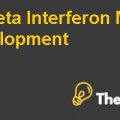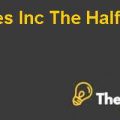Introduction
Diamond Chemicals operates in the chemical industry and its major product is polypropylene; moreover, it has global presence and is a key competitor of the chemical industry. Polymer is used in different range of products such as from sophisticated medical equipments to automobile parts. Diamond Chemicals started its Merseyside and Rotterdam plants during the year 1967 for the production of polypropylene from propylene, which is a bi-product of oil refineries and Diamond Chemicals purchases propylene from England based four refineries. The process of producing polypropylene was a two step process, which involved mixing of propylene with diluents and this process was completed in higher pressure vessels and in the second step polypropylene was compounded through step by step process and finally converted into pallets for shipment to the customers.
However, the way they produce these chemicals is now generating some issues, which need to be brought into consideration sooner or later in order to avoid massive disaster in this competitive environment. These plants were obsolete and cost oriented as compared to the plant of its competitors, which resulted with a reduction in earnings per share from £60 per share to £30 per share in the year 2000. Therefore, Mr. Morris, who is appointed at her post almost a year ago, came up with a proposal of a £9 million expenditure plan for enhancement of Merseyside plant as a best possible solution. Similarly, there was another enhancement plan proposed by Eustace’s for Rotterdam Project, whose estimated cost was around £8 million. Now, Diamond Chemicals is in a dilemma where it has to select the best option that will add value to the business.
Analysis and Recommendations
To conduct a tremendous analysis, four criteria were set by the Diamond Chemicals. These four criteria include the computation of Net Present Value (NPV) on the basis of appropriate cost of capital, Internal Rate of Return (IRR), payback period and the annual growth in the Earning Per Share (EPS).
The project cash flows for each of the alternate options has been prepared by the management and initial calculation for the decision criteria has been drawn in exhibit 1 and 2, however, these projections are not accurate and lack in some areas, which have been highlighted by other departments; therefore, these estimates and facts needs to be incorporated into the calculation in order to reach a realistic result for the evaluation of each option. The very first thing that needs to be incorporated in cash flows of both the projects is the consideration of treasury department regarding the inflation rate of 3% because the projects will take 15 years to complete and during these 15 years, prices of all the goods will inflate; hence, the revenues and expenditures from this project will also inflate. Further, it was noticed that there was a serious change noticed in the sales of Merseyside project in the year 2002 of around $144.72 million and changed to $149.06 million by taking the 3% inflation factor into considerations. Similarly for the Rotterdam project, an addition of 3% inflation will give new sales figure of $94.75 million as compared to the old figure of around $93.81 million. Moreover, the calculation performed takes charge of corporate overhead expense for the new projects, however, since the corporate overheads are fixed and Diamond Chemical will have to incur these overheads regardless the project is under taken or not; therefore, these overheads have been excluded from the 15 years’ cash flow projection.
Furthermore, the cash flow required for work in process has been incorporated in Merseyside project during the first two years but in later years the incremental cash flows required by work in process had not been incorporated. For the meantime, these investments into work in process will be realized at the end of 15 years, which the projection fails to consider and the same has been adjusted in the revised calculation of the cash flow projections. On the other hand, Greystock has incurred preliminary engineering costs for Merseyside project and included this cost as part of project evaluation. However, since this cost had already been incurred and could not be avoided whether the Merseyside project is proceeded with or not; therefore, this cost had been removed from the cash flow projections.
Furthermore, the transportation of polymer will increase if Merseyside project is undertaken and will require additional investment for acquisition of tank cars and the investment have been estimated as £2 million and new cars will have an economic life of 10 years. Since, the transportation division incurs cost and Diamond Chemicals will have to provide the resource in order to meet the transportation need; therefore, an outlay of £2 million and depreciation of the new tanks has also been incorporated in the projected cash flows of Merseyside project......................
This is just a sample partial case solution. Please place the order on the website to order your own originally done case solution.
Diamond Chemicals PLC (A) The Merseyside Project Case Solution
These two cases (part a and b) are part of decision making for capital investment which is to be made by the leaders of the largest chemical company in January 2001. The case "is a Go / No-evaluation of the project to improve the polypropylene plant. Case B is considering the same project, but with one level above where the executives and / or investment decision between two mutually exclusive projects. Purpose of these two cases is identifying students for a wide range of capital budgeting, issues that include, among other things, identify the relevant cash flows, critical evaluation system of investment capital, the classic "cross" problem, in which the project rankings agree on the basis of net present value (NPV) and Internal Rate of Return (IRR), and the evaluation of the real hidden value of the option in the management of flexibility in changing the operating technology. "Hide
by Robert F. Bruner Source: Darden School of Business 9 pages. Publication Date: October 10, 2001. Prod. # : UV2493-PDF-ENG













